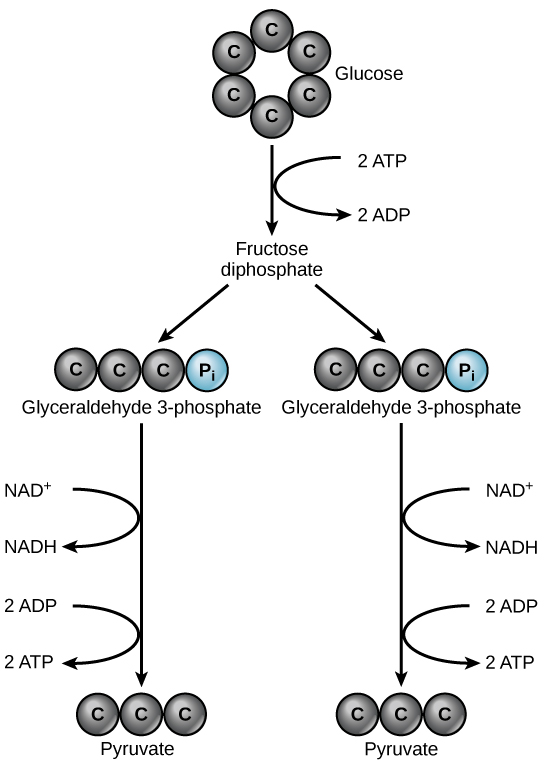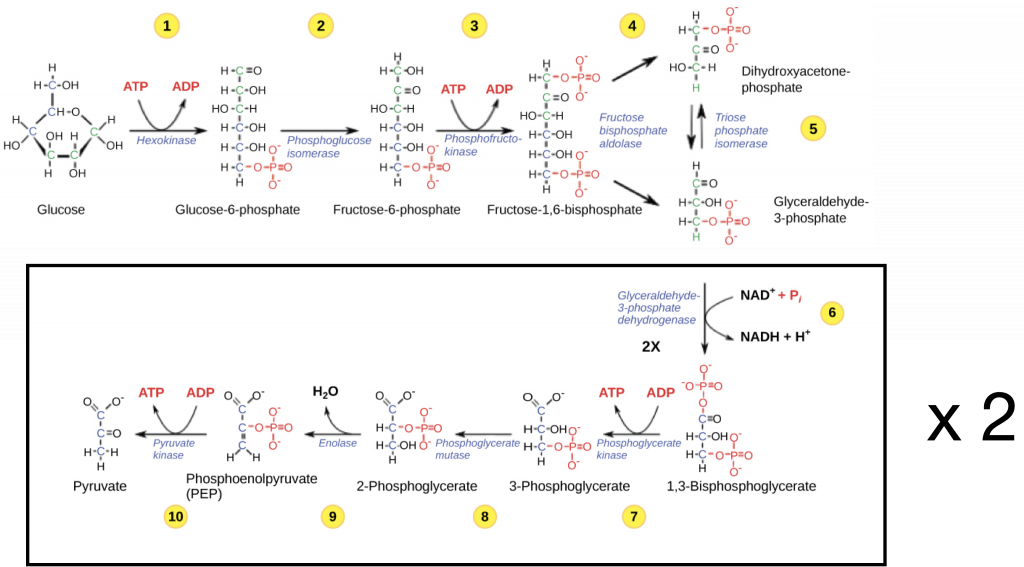23.2 Glycolysis
Overview of Glycolysis
Glycolysis is the first step in the breakdown of glucose to extract energy for cellular metabolism. In fact, nearly all living organisms carry out glycolysis as part of their metabolism. The process does not use oxygen directly and therefore is termed anaerobic. Glycolysis takes place in the cytoplasm of all cells, both prokaryotic and eukaryotic.
Glycolysis begins with the six-carbon ring-shaped structure of a single glucose molecule and ends with two molecules of a three-carbon sugar called pyruvate. Glycolysis consists of two distinct phases. The first part of the glycolysis pathway traps the glucose molecule in the cell and uses energy to modify it so that the six-carbon sugar molecule can be split evenly into the two three-carbon molecules. The second part of glycolysis extracts energy from the molecules and stores it in the form of ATP and NADH—remember: this is the reduced form of NAD+.

Outcomes of Glycolysis
Glycolysis begins with glucose and produces two pyruvate molecules, four new ATP molecules, and two molecules of NADH. (Note: two ATP molecules are used in the first half of the pathway to prepare the six-carbon ring for cleavage, so the cell has a net gain of two ATP molecules and two NADH molecules for its use). If the cell cannot catabolize the pyruvate molecules further, it will harvest only two ATP molecules from one molecule of glucose.
This happens when a cell is deficient in oxygen gas, the final electron acceptor used in aerobic respiration. Under this circumstance, human use a different final electron acceptor which is the organic molecule pyruvate. This inefficient mechanism of generating ATP from glucose is called fermentation.
Mature mammalian red blood cells do not have mitochondria and thus are not capable of aerobic respiration—the process in which organisms convert energy in the presence of oxygen—and glycolysis is their sole source of ATP. If glycolysis is interrupted, these cells lose their ability to maintain their sodium-potassium pumps, and eventually, they die.
Steps of Glycolysis

process of breaking glucose into two three-carbon molecules with the production of ATP and NADH
three-carbon sugar that can be decarboxylated and oxidized to make acetyl CoA, which enters the citric acid cycle under aerobic conditions; the end product of glycolysis
an anaerobic process that quickly generates an additional ATP through the reduction of pyruvate

